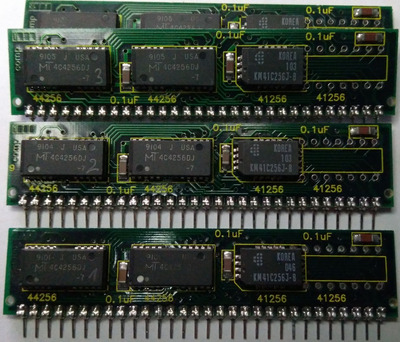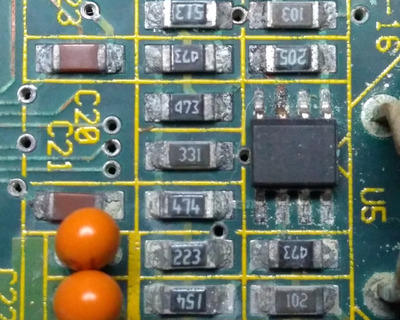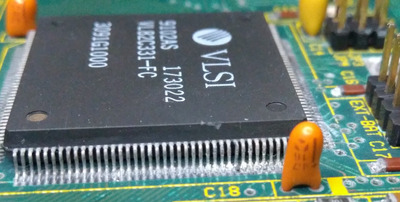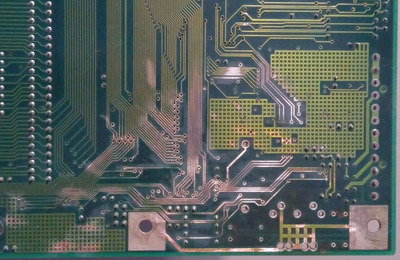First post, by Nexxen
- Rank
- Oldbie
Hello!
I got this board for the sole purpose of repairing it or at least try doing so.
Mainly I'm reporting back on my progress, and ask for some feedback when something isn't straightforward (mostly a "how to proceed").
It's going to take some time as it is a slow project.
Edit: repaired and working.
https://youtu.be/G2uS0BaOtpM
A big thank you to The Retro Web, source of a lot of stuff of invaluable help.
So far:
1) removed the battery and neutralized;
2) cleaned the board twice;
3) polished corroded traces and rebuilt;
4) some solder mask applied;
5) chipset desoldered + cleaning and polish
- desolder all that is in the way for trace polishing: caps, keyb connector, jumper pins...
- polish, clean traces
- a ton of continuity tests 😀
- desolder or try to reflow chipset pins: as much as 30 + a few are soldered to pads that have the trace under the chip itself: I fear ripping it as that would be hard to repair.
- polish legs of chipset
- rebuild broken pads + traces
- anchor wires & traces & pads
-resoldered all the components replacements (new)
To do (in progress):
xx
PC#1 Pentium 233 MMX - 98SE
PC#2 PIII-1Ghz - 98SE/W2K























